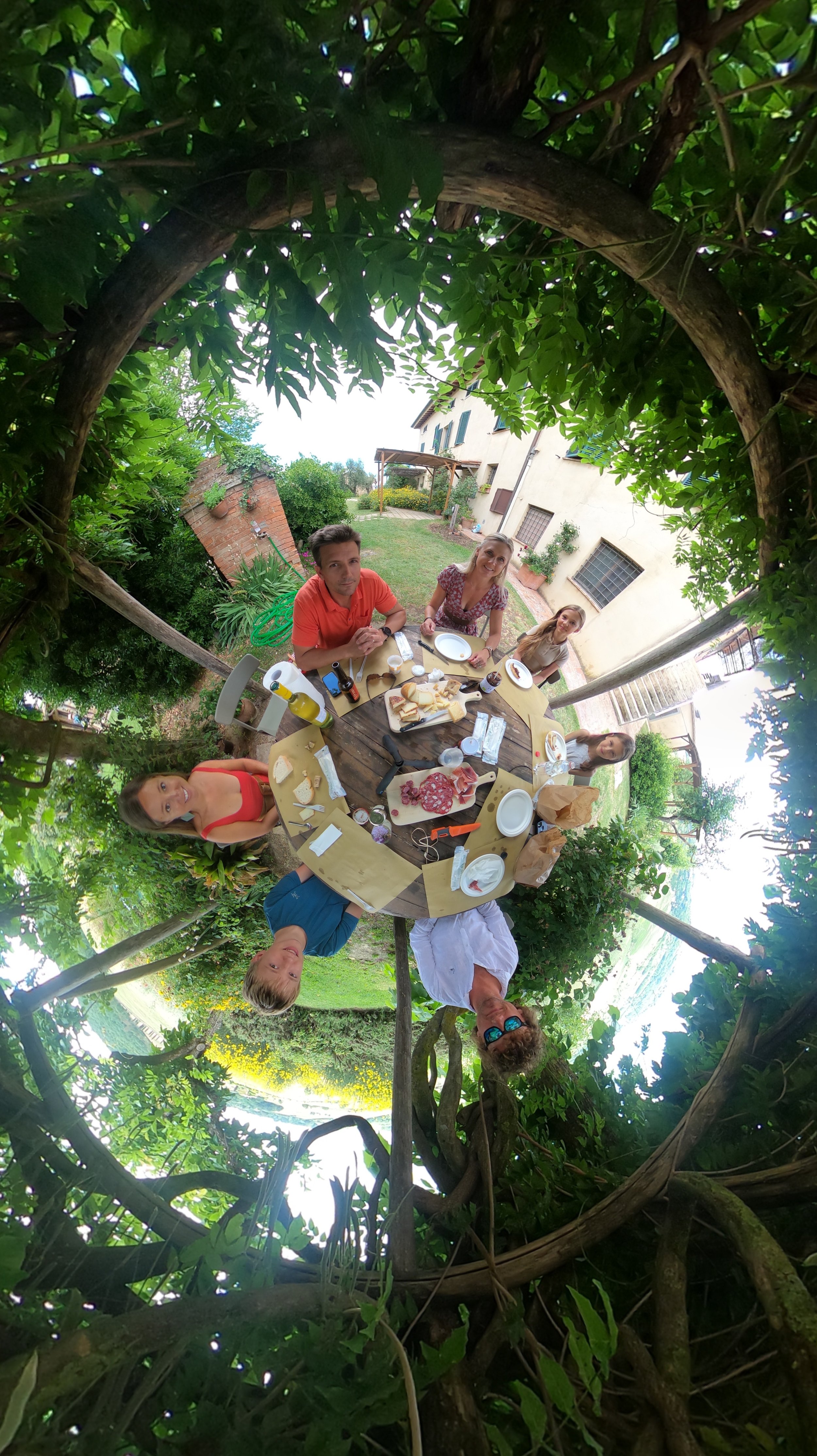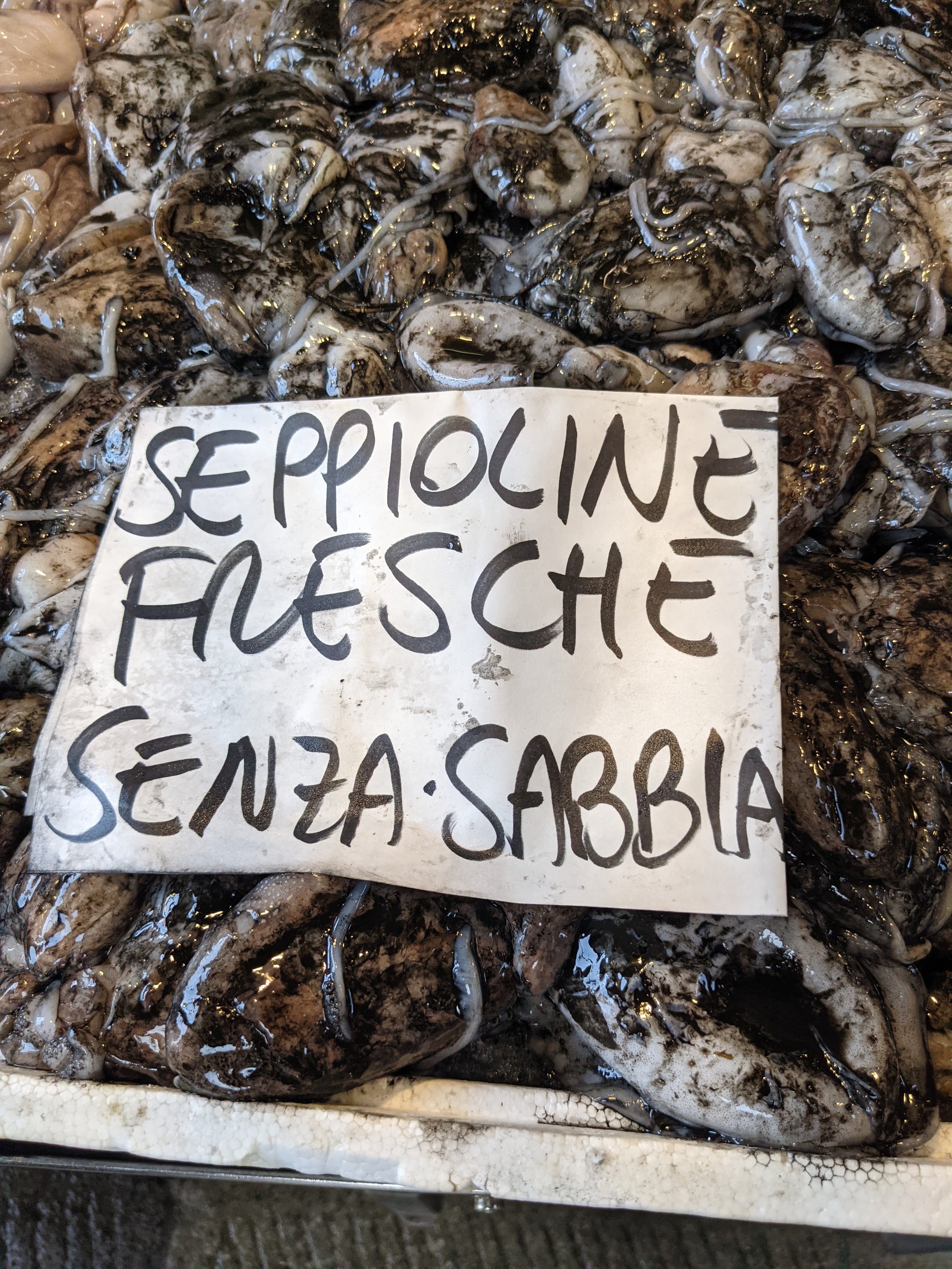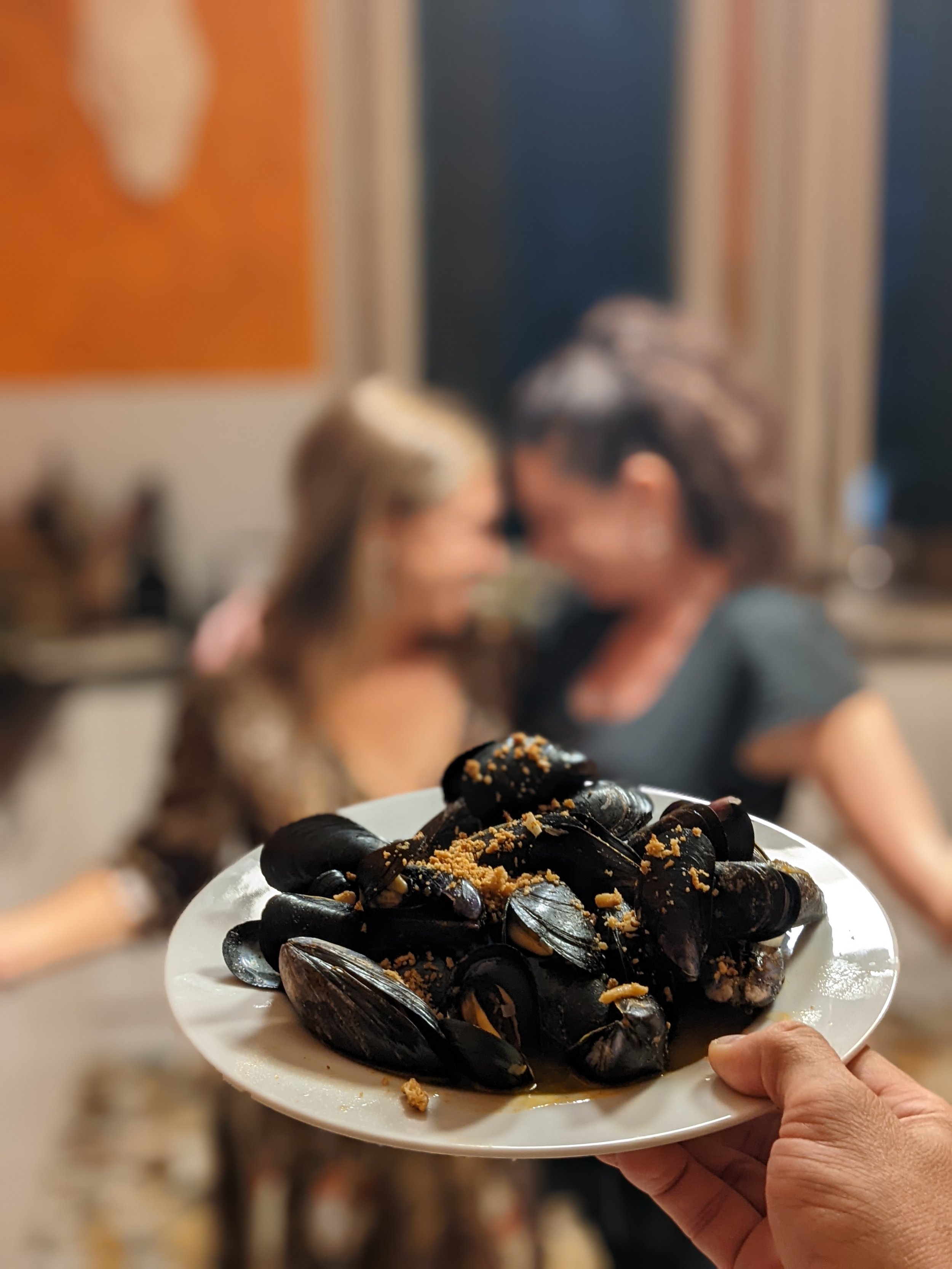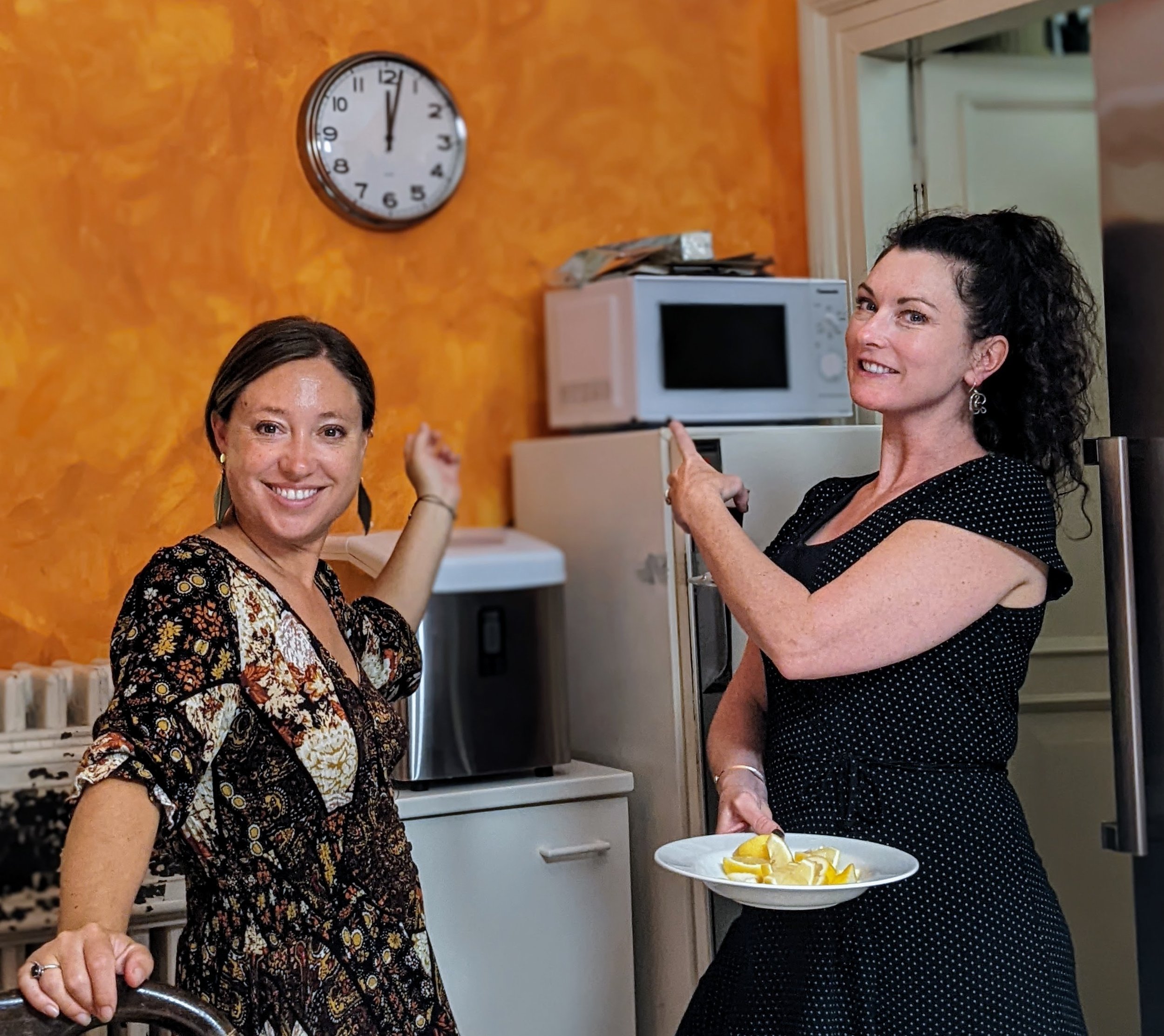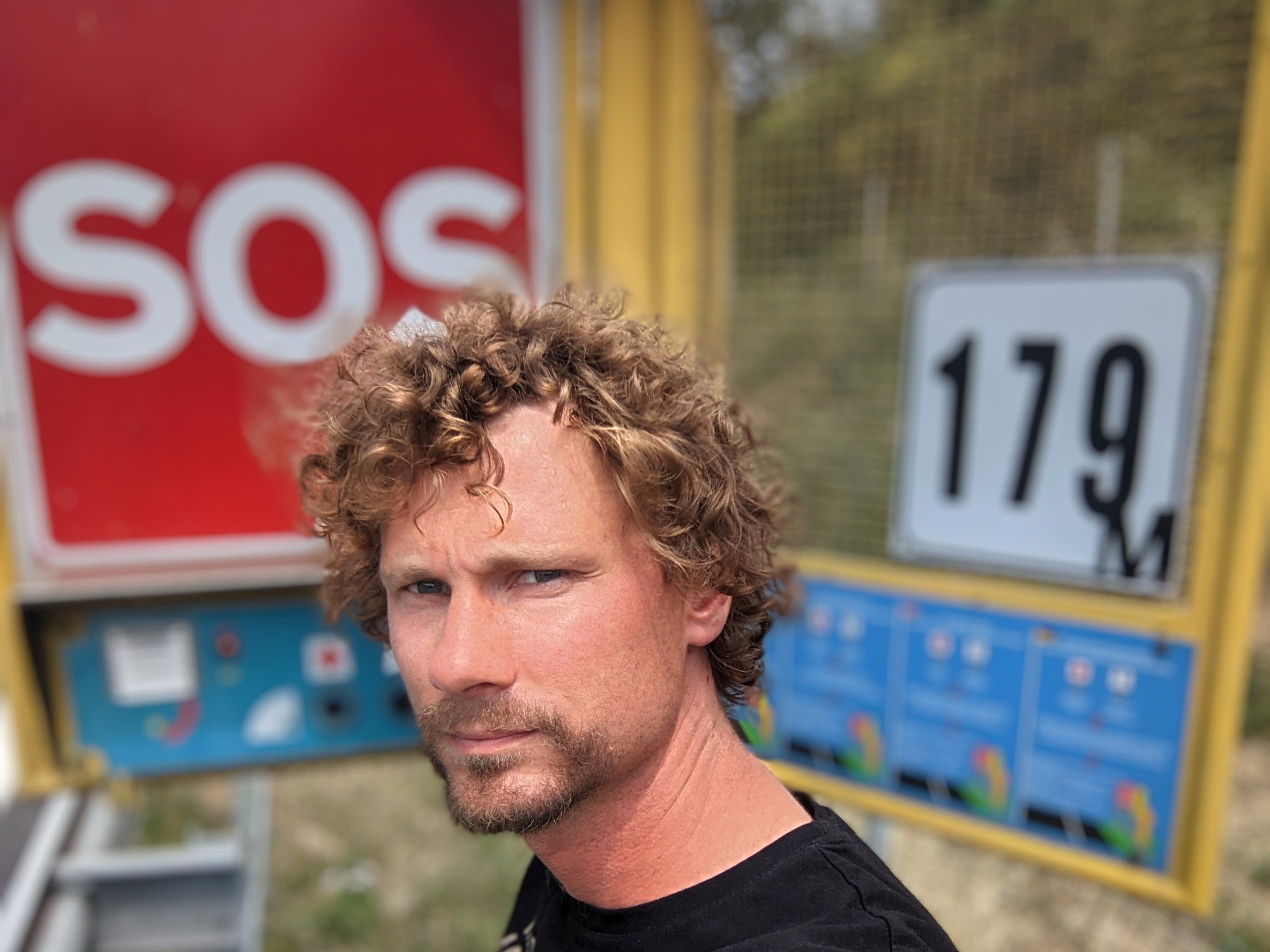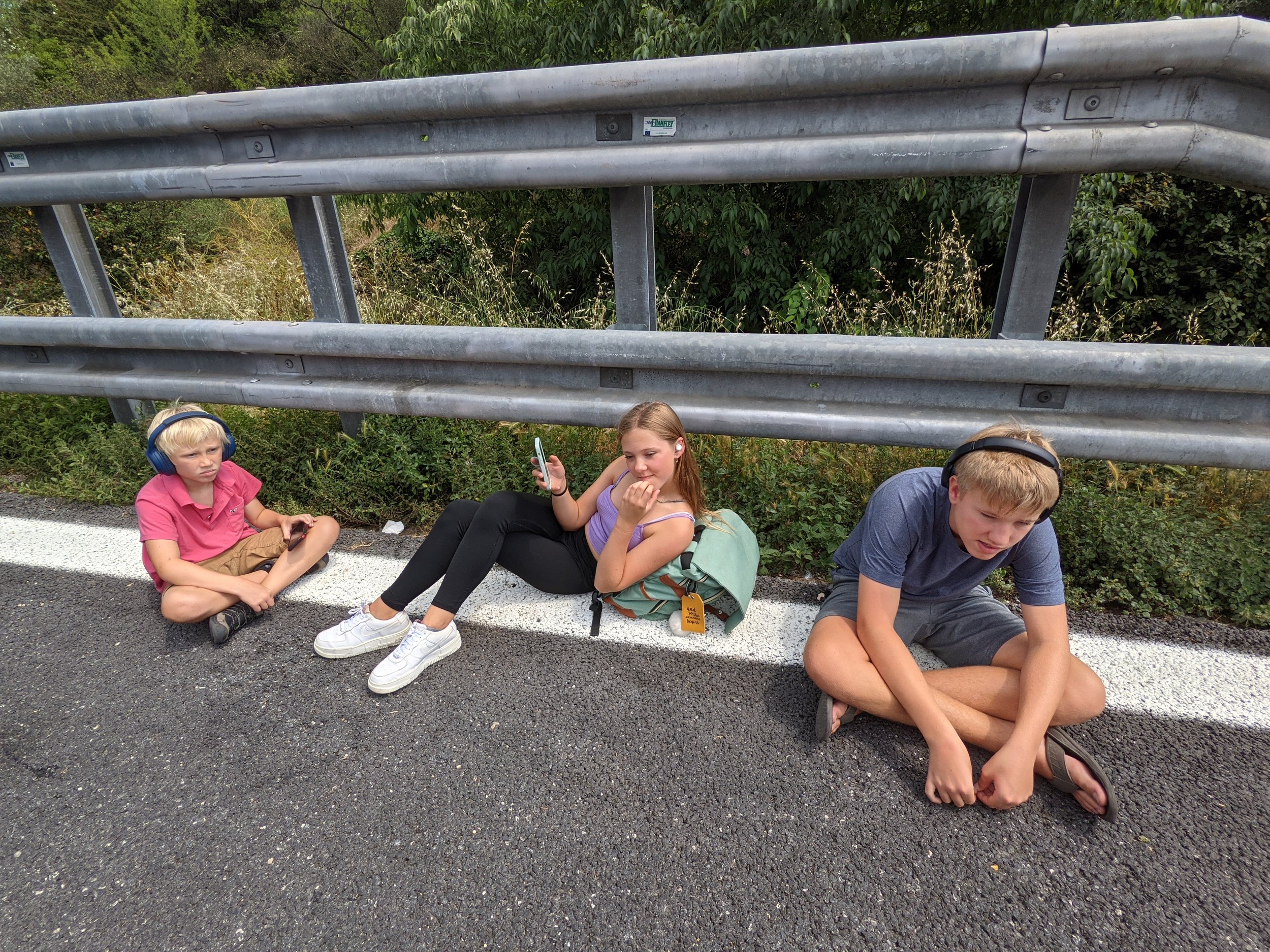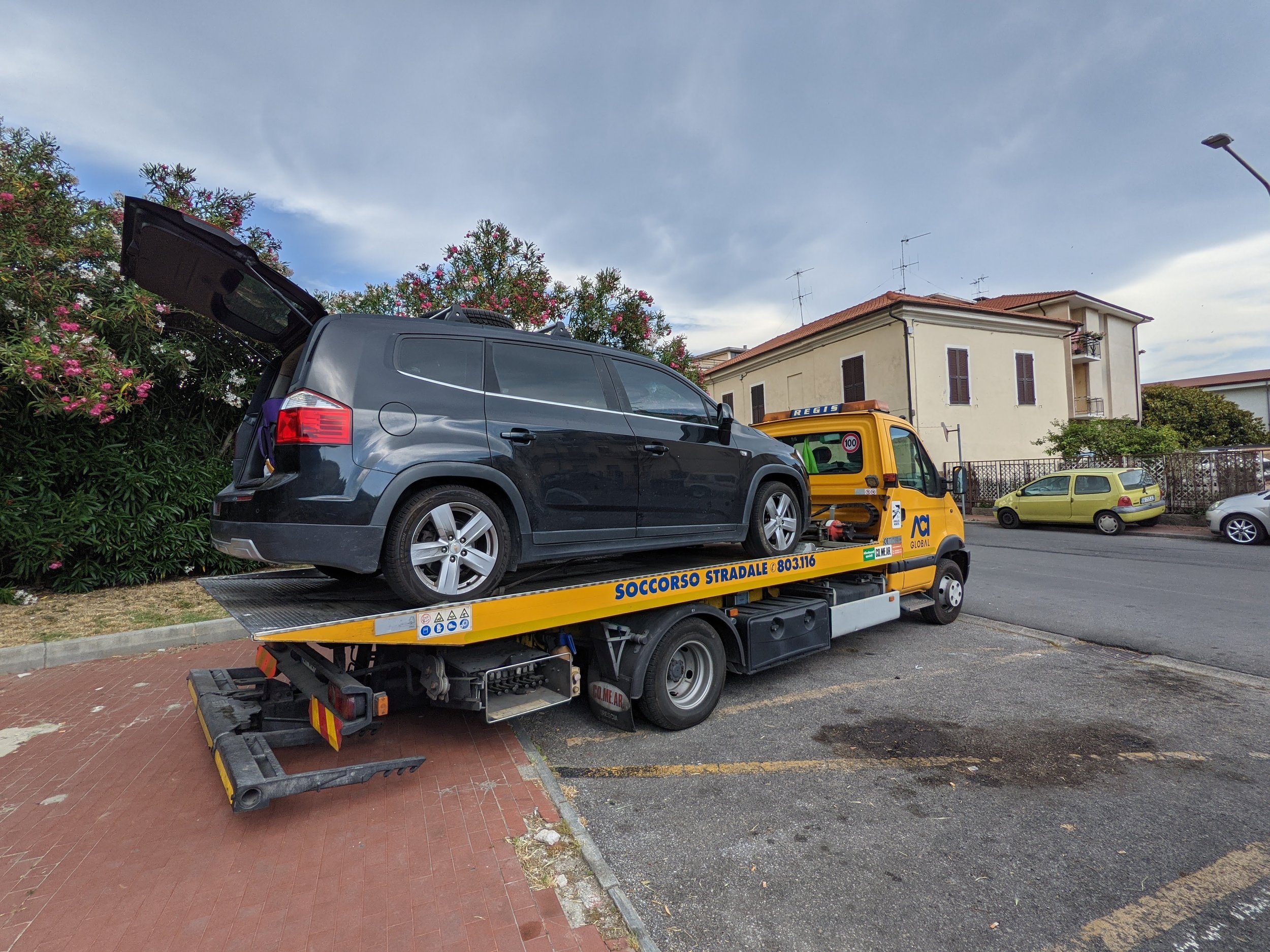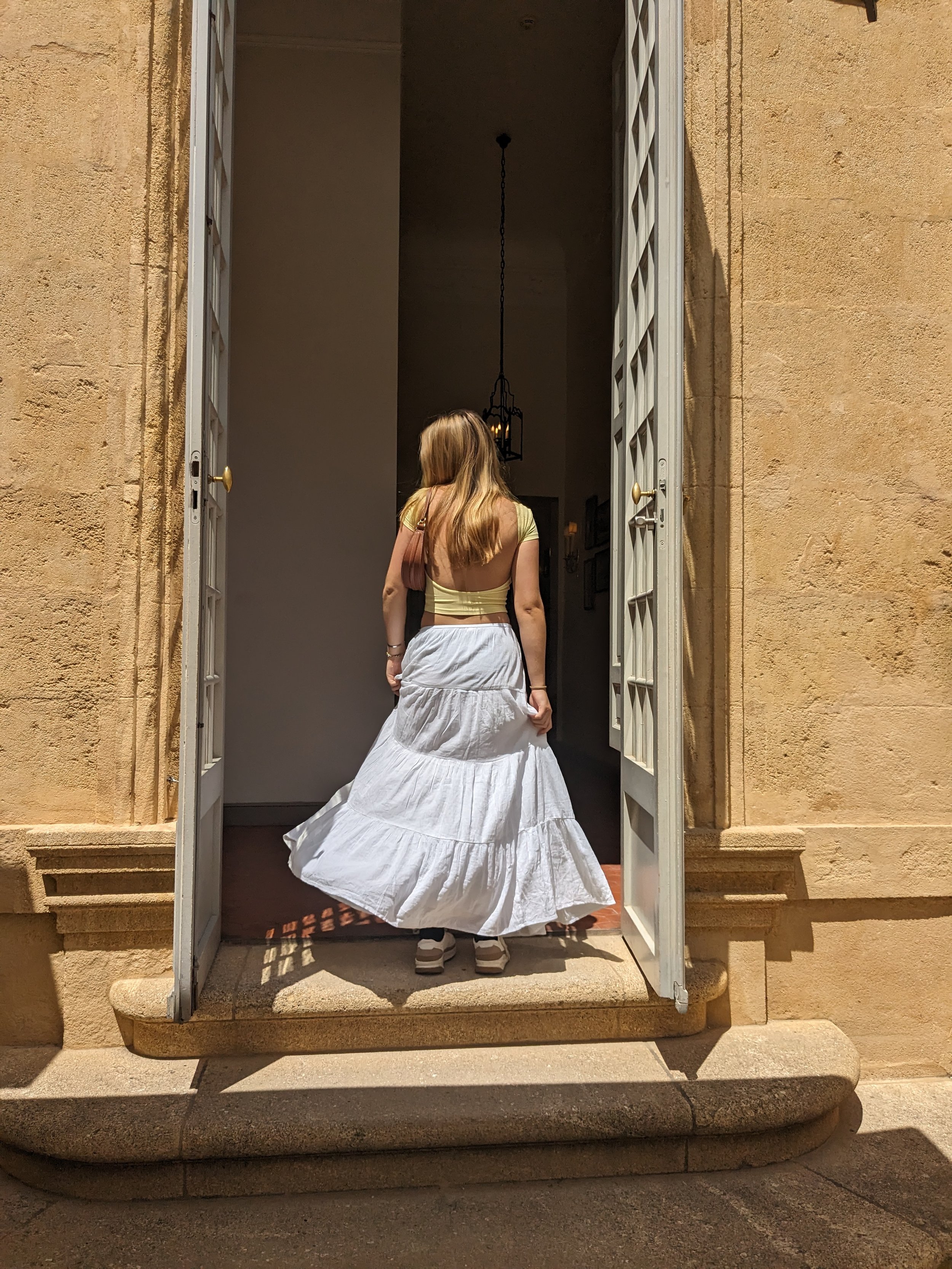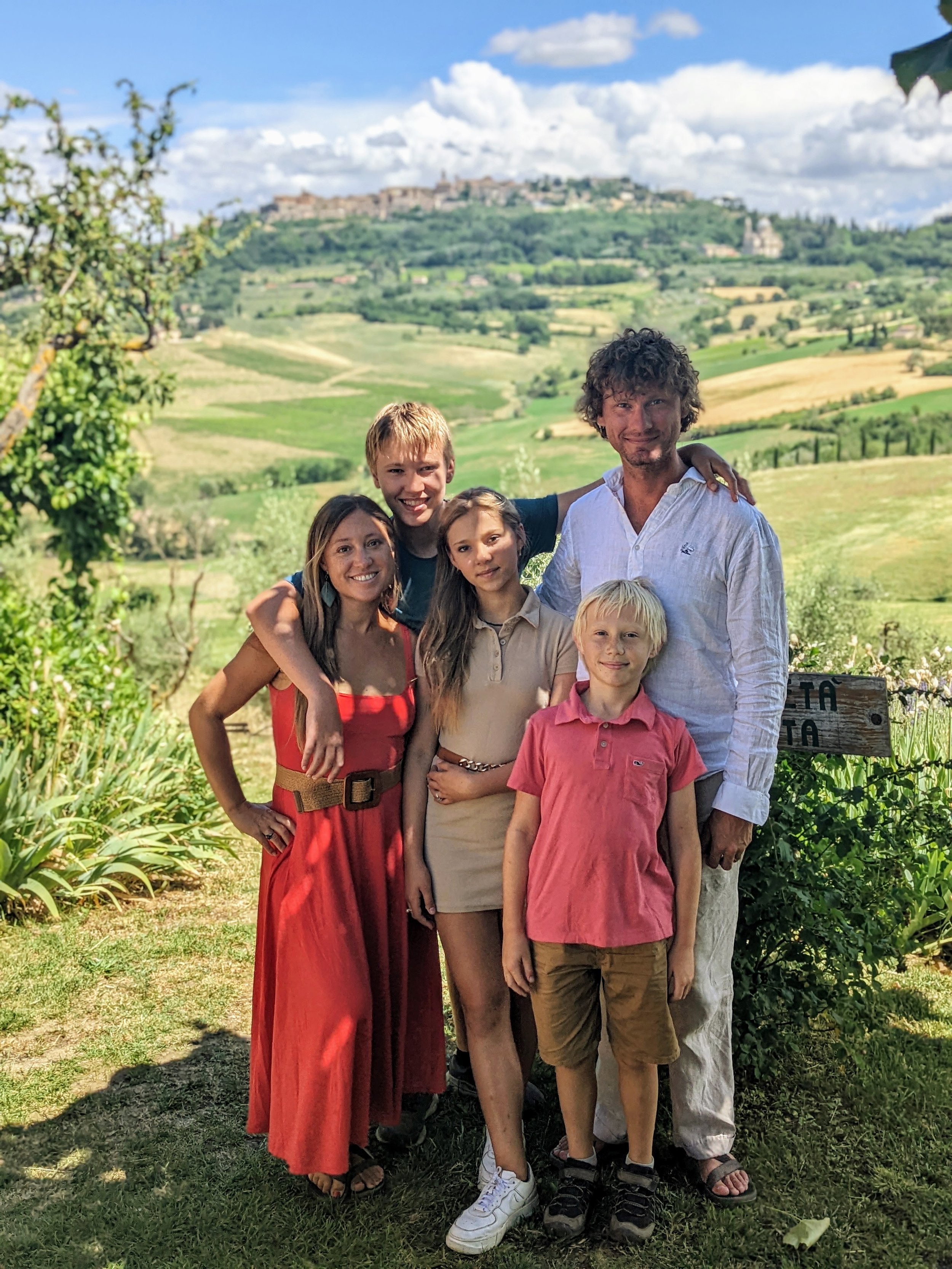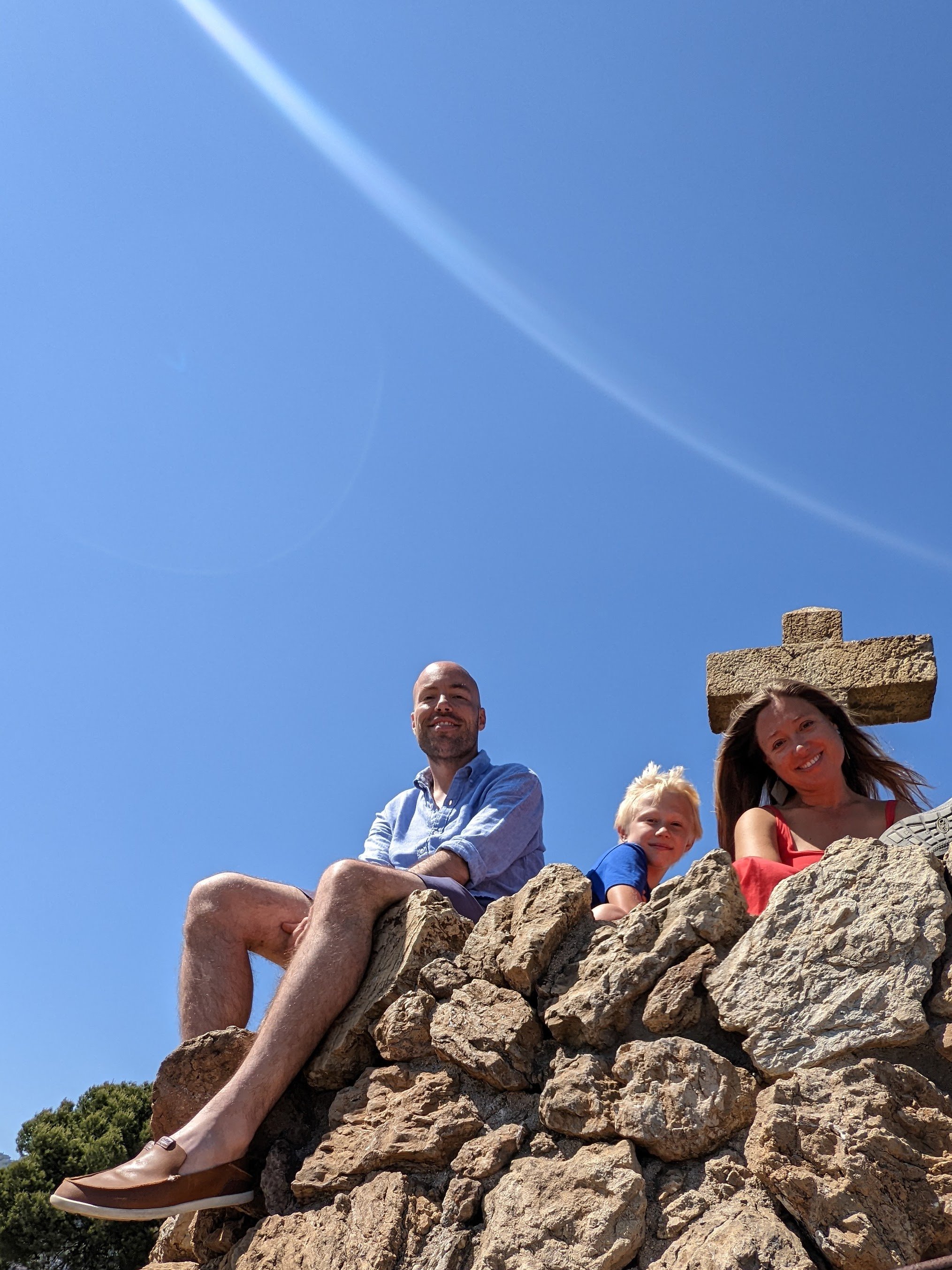Fifteen tips for a magical European vacation with Kids
Enjoying a picnic of cheeses and sausage at Cugusi Silvana in Montepulciano, Italy
Planning travel with kids
If you want to give your kids an introduction to visiting foreign countries but don’t want to give up too many creature comforts, Europe is a good choice for a family vacation. We spent 11 weeks in Europe and barely scratched the surface of places to visit and things to do there. The beauty of Europe as a travel destination is that you can experience so many different cultures and countries without actually travelling that far. Due to the creation of the European Union, you don’t have to deal with immigration or changing currencies when you travel from one country to the next. All of that being said, there are some logistical challenges of travelling with kids that made my second trip to Europe very different from the trip I took carrying a backpack and taking trains across Europe during the summer after I graduated college. Just like everything, a trip to Europe with kids requires more thoughtful planning if you want it to go smoothly. Read on for our fifteen tips for planning a trip to Europe with kids.
A stop for ice cream off the beaten path at Murano Artisan Ice Cream, Veneto, Italy
1. Don’t pick too many destinations/plan too many transitions.
Every time you transition from one city to another, you can plan on it taking an entire day of your trip. By the time you pack up your belongings (2 ish hours), get you and your brood to whatever form of transportation you are using, take said transportation, possibly connect to other trains/flights, find your next accommodations, get settled in and unpacked, it will take the better part of a day every time. Even if your next destination is only a couple hours away, this is still true. After you have done all of these things, no one will have much energy left to explore the new location at the end of the day. Trust me on this one.
A long train ride from Genova to Rome with the luggage piled high.
2. Don’t stay less than 3 nights in one location.
This is basically a different way of saying the same thing I said in tip number 1, but it deserves repeating. We found 3 nights to be the sweet spot for seeing multiple places, but giving us enough time in each spot to get a feel for the place. There is nothing wrong with staying longer, if that is your preference, but I wouldn’t cut it shorter than 3 nights.
3. Plan your transportation far in advance.
Due to various economic factors related to COVID and the war in Ukraine, there is a shortage of rental cars in some European destinations. As a result, it is best to book a car far in advance (we are talking 6 months here) if that is your planned mode of transportation. High speed train tickets can also sell out, and booking your flights at least 2 months in advance is advised.
Parking restriction are overly complex, with tiers and restrictions. We often defaulted to parking in large urban garages which were expensive: 30-60 euro per day.
4. Tailor your transportation choices to your destinations and do your research on parking and restricted travel zones.
If you plan to visit larger cities, it is best to take trains and planes instead of renting a car. Parking is very difficult and expensive in most European cities and your car will remain parked during most of your time there because you will not need it and will not want to drive. Additionally, most cities (Rome, Florence, Paris, Barcelona, and Madrid to name a few) now have restricted access zones that allow only residents to drive in the city centers. If you enter without appropriation permits, you will receive a hefty fine. If you plan to visit small to medium sized towns, however, renting a car may be your best bet. I personally prefer driving around Europe with kids over taking the train. Although the train was easy as a single 20-something, it is tough to navigate with a family of five and full-sized suitcases. Additionally, driving allows more flexibility to stop and explore destinations along your route and gives you the chance to see the less populated countryside. A lot of the trains travel through tunnels and through less idyllic parts of the cities and, in my opinion, don’t offer the same views you get from the car.
Enjoying dinner with the Winters on our rooftop terrace in Corniglia, Cinque Terre, Italy
5. Stay in places with outdoor space for relaxing.
We rented several apartments with rooftop terraces and these were, by far, our favorite places. While this seemed like a luxury at the beginning of our trip, it quickly became an essential element when booking places to stay. We loved having our own space to view the city and especially appreciated these spaces in the evening and at night when the kids were tired but we didn’t want to sit inside. We won’t rent a place without a balcony or terrace again.
Sunset shot of us with the Duncans on the roof top terrace in Minori, Amalfi Coast Italy
6. Book places with a full-sized kitchen and prepare at least one meal a day at home.
Eating out for every meal can get really tiring and expensive with kids. We loved cooking a big breakfast/brunch before exploring for the day, so that everyone had plenty of fuel to last. Alternatively, sometimes it's nice to eat in for dinner after a long day. I highly recommend visiting the daily markets around Europe to get your produce and meat. They are bustling, vibrant spaces where tourists and locals mingle. For more on eating healthy abroad, see our separate post.
7. Book places along the edge of the city centers/old towns.
I found it best to be just outside the historic center. This was the right mix of being close to everything but having a little more space to spread out. It also gave us better access to grocery stores, which tend to be small and overpriced within the historic centers. My strategy is to find the boundary of the “old town” and pick a place one block outside.
An evening exploration of Zaragoza Spain with the Basílica de Nuestra Señora del Pilar in the distance.
8. Visit some small to medium sized towns in addition to seeing the big cities.
Sure, everyone wants to see the Eiffel Tower, but large cities, like Paris, are exhausting and can be really overwhelming for kids. I like to alternate large cities with smaller towns when I plan a trip. In France, for example, we greatly preferred Aix en Provence over Paris. In Spain, Cadaques and Malaga were our favorite destinations. On the island of Crete, Rethymno beat out Chania and Heraklion as our favorite spot. And in Italy, we all preferred Venice over Rome.
The Ponte Vecchio is magical at night with the colorful bridge reflecting off the still waters of the Arno River.
9. Explore the cities at night.
After dark was absolutely our favorite time to wander through the city centers. Although Florence was packed and you could barely walk across the Ponte Vecchio during the day, it was lit up and magical and all ours at night. Venice at night, with the water lapping against the edge of the canals, and the light reflecting on the water was pure bliss. The Trevi fountain in Rome and vast plazas in Spain were more beautiful and so much more pleasant without the hordes of tourists during the day. If you don’t subscribe to the nobedtimes philosophy and your kids cannot stay up that late, consider walking around very early in the morning instead.
The Trevi Fountain at Night. Rome Italy
10. Book the big things you want to see in advance and pay the extra money for a few good tours and skip-the line tickets.
Depending on the activity, tickets may go on sale anywhere from 6 months to 1 month in advance. While most places also offer tickets for entry on the day of your visit, getting those tickets usually requires standing in a long line. Pay the extra money to book your skip-the-line tickets in advance. If there are sites that you definitely want to see, start researching those 6 months in advance to determine when you need to secure your tickets and the best rated tours.
The Colosseum requires advanced tickets unless you want to spend a large part of your day in line.
11. Avoid over-programming and intentionally include some unstructured time in your daily itinerary.
I never book more than one major activity a day. If we are doing a tour or visiting a museum, things that will require my kids to be quiet and listen for an extended period of time, I plan downtime during the other half of that day. We love visiting parks in foreign countries because they are all different. I almost always try to combine a major attraction with a stop at a nearby park or beach afterwards for the kids to decompress.
This sweet playground was tucked into Plaza De Las Cofradías in Malaga Spain and was a great way for the kids to decompress.
12. Pack light.
Ideally, everyone can carry their own bag for things like train transfers. If not, consider packing your kids things in a smaller bag inside your suitcase to make it easier to manage the luggage. I prefer a rolling suitcase to a backpack. I find it is a lot easier to find things in a suitcase and it doesn’t require you to completely unpack at every destination. It’s always tempting to pack too much, but you will regret it as you lug your bags through busy train stations and down blocks of pedestrian-only cobblestone streets. When packing, just keep in mind that you can buy anything that you really need and forget to pack. It’s a good excuse to shop in Europe, which is always fun.
We did not pack light and by the end of the trip 2 of 5 suitcases contained things we no longer used.
13. Make sure you have a good international data plan for your phone.
I can’t believe I ever travelled in Europe without a telephone. Having your phone handy to use google maps, check travel schedules, and communicate with Airbnb hosts is essential. We switched to GoogleFi before our trip and it was AMAZING. It costs $40 per line for unlimited data, text and wifi calling. Its 20 cents per minute for non-wifi calls. This crushes the $10 per day Verizon charges you while abroad (which is on top of your regular costs). It immediately worked in every country we visited and we had service everywhere. I highly recommend it, and since there is no contract you could get the service just for the month of your trip and save money. Most people in Europe prefer to communicate with you via WhatsApp, which you can easily download before or after you arrive.
Machine Hallucinations - Renaissance Dreams by Refik Anadol 2022 at Strozzi Palace “Lets Get Digital” NFT exhibition
14. Visit some smaller, less well known museums and try to find some “off-the-beaten path” activities.
Instead of visiting the Uffizi in Florence, for example, we visited a digital art exhibit at the Strozzi Palace instead. It was so unique and, after seeing wall after wall of classic art throughout Europe, a nice contrast. We also attended a folk music performance at Giardino Artecultura for pizza and beer night in the park while in Florence. We were the only tourists there, and joining in the dance circle at the end of the show was one of the coolest experiences we had in Europe. Finding these treasures takes more digging and you always run the risk of them being a total flop, but it’s worth the risk to occasionally hit the mark with an amazing experience.
Gus and Peter enjoying pizza in the Giardino Artecultura while listening to Sënaturë/Suonatori di Ostuni Grintoso
15. Be flexible and be mentally prepared for things to occasionally go wrong, they will.
It’s always hard, but try to see the mishaps as learning experiences. Part of the point of travelling to a foreign country is to challenge yourself and your kids. With those challenges will come occasional failures and from those failures comes growth. From destroying washing machines that were totally different from those we were used to in Greece, to accidentally putting gas in our diesel car and breaking down, to getting stuck in the ancient maze of Pyrgos during the Good Friday celebration, to making the wrong turn off an insanely confusing roundabout 100’s of times, our 11 weeks in Europe were filled with minor to major mistakes. We were always able to regroup, come up with a new plan, and laugh about them at the end of the day and that is one of the greatest strengths of our family and Joey and I as a couple. Every time we overcame a challenge, our confidence and our family grew stronger. That’s the whole point.
Conclusions
Travelling abroad as a family is a way to create foundational memories for you and your kids. With good planning and an open mind, you can make it happen. If you have any helpful tips I haven’t mentioned here, feel free to share in the comments below.
